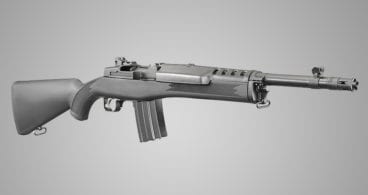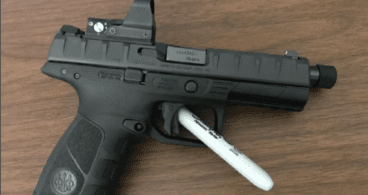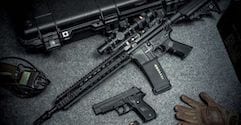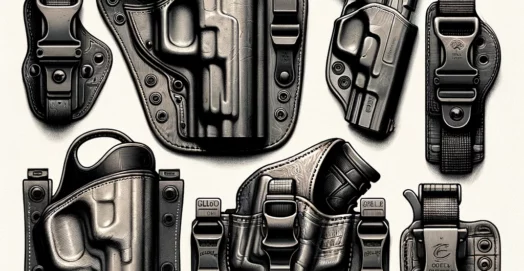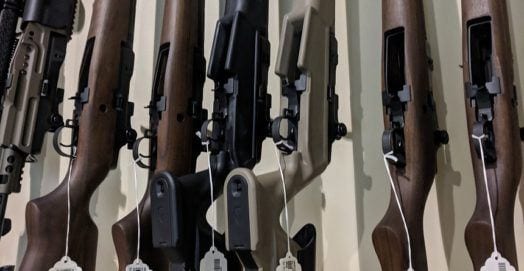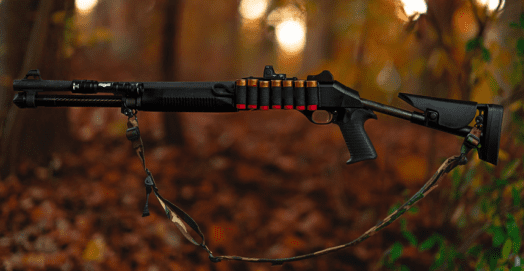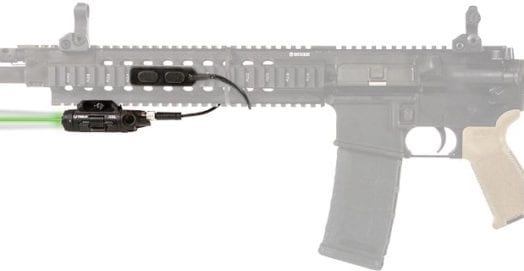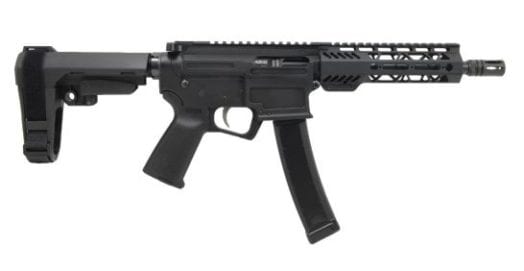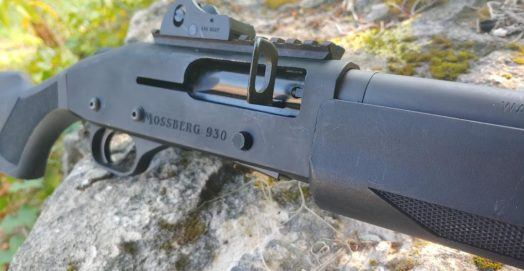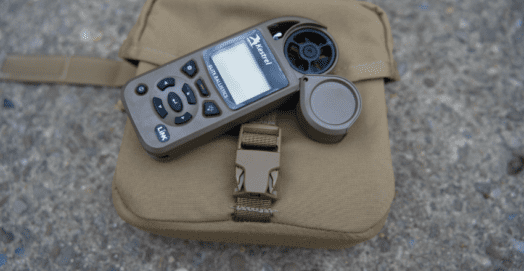.223 vs .308: A Caliber Comparison (Ballistics, Accuracy & More)

Which is better, the 223 vs 308? The .223 Remington and .308 Winchester are the two most popular centerfire rifle rounds in the the world, and with that popularity comes a thousand comparisons, debates, discussions, and arguments over which one is better.
Well, make that a thousand and one, because we’re about to add to the wealth of info on these two rounds with our own take on the 223 vs 308. But we’re going to handle this a little bit differently. See, because these two rounds are so popular, and because they have so many positive things going for them, we can’t really declare one intrinsically better than the other, especially since they’re actually pretty different.
Instead, we’re going to talk about which one works best for you.
Statistically speaking, most rifles in the US are chambered in one of these two calibers, and most shooters are going to own at least one. It’s almost a rite of passage to own an AR-style rifle these days, and unless you’re looking for a more boutique caliber like the .300 Blackout or 6.5 Creedmoor, chances are that rifle will be in one of these two calibers.
So, let’s take a look at the .223 Remington vs the .308 Winchester, and try to decide which one you should invest in (or at least invest in first).
Contents
223 vs 308: History
Both of these rounds have a long history in America, and both of them started with the U.S. Military.
Following WWII, the US government sought to replace the .30-06 cartridge Springfield used in the M1 Garand, Browning BAR, and Springfield 1903 with a smaller, lighter, and lighter-recoiling cartridge, that was at least fairly close to the stellar ballistics of the .30-06 Springfield.
The lighter weight would allow troops to carry more rounds in the field, and the lighter recoil would allow the rifles to be more accurate (and less punishing to the shooter) during fully-automatic fire. If you’ve ever fired one of the old BARs, you know that no one enjoys the .30-06 Springfield on full-auto.
The desire for controllable full-auto fire came primarily from a need to compete with the German STG-44 and the Russian AK-47. Both weapons were chambered in more intermediate cartridges and were much more usable during fully-automatic fire.
What the government eventually came up with was the M-14 rifle chambered in 7.62x51mm NATO, which Winchester would eventually tweak the round and release it to the public as the .308 Winchester (though you can now buy both). The original M80 loading of the 7.62x51mm was ballistically very similar to the .30-06 Springfield in both projectile size, and velocity, but utilized a much shorter case, which made it an instant success as far as the military was concerned.
The 7.62×51 was quickly adopted as the primary round for US sniper rifles and light machine guns, a position it still holds today, though that may be changing.
The civilian version, the .308 Winchester was quite successful as well, and quickly caught on with hunters and target shooters who enjoyed the benefits of a .30-06 equivalent with a shorter case, less recoil, and lower price point.
The one area where the round wasn’t entirely successful was in the M-14 itself. As an infantry rifle, it still wasn’t quite controllable enough under full-auto fire, and the round itself was still too large and too heavy for individual soldiers to carry sufficient amounts for extended field operations on their person.
Enter the 5.56x45mm and the M-16.
As it became clear in the 1960’s that the M-14 wasn’t ideal for the average infantryman, and as the military began looking for a replacement, Eugene Stoner’s classic AR-15 design that we all know and love so well came to the forefront, along with a modified .223 Remington round, which of course was the 5.56×45.
This new rifle and new round had some growing pains of course—we’ve all heard the horror stories of the M-16’s unreliability in the jungles of Vietnam, but these were no real fault of the gun or the ammo.
The concept of a lightweight, easily-controlled, fully-automatic infantry rifle firing an intermediate cartridge that was easy to carry appealed to all branches of the military, and by the 1960’s, the Army, Airforce, and Marines were all using it, and the Navy would follow shortly after.
Since that time, there have been trillions of each of these rounds produced, and each one has earned a loyal following with not only Western militaries, but civilian shooters around the world. This widespread acclaim contributes to the difficulty in weighing the 223 vs 308.
Price
With all that popularity, and all those rounds being produced every year, it should come as no surprise that there’s some cheap .223 and .308 ammo out there. In fact, you can’t get much cheaper for an intermediate cartridge or a big game/long range round in their respective classes.
That said, when comparing the .223 and the .308, it becomes obvious why the .308 is more expensive.
The .308 uses a longer case (2.015” vs 1.76”) a larger bullet (.308” vs .224”) and has a higher case capacity (53.2gr H20 vs 31.1gr H20 on average), all of which combines to make the .308 simply more expensive due to the amount of materials involved in making the round.
If you’re looking for something that is cheap to shoot, you can certainly do worse than the .223. There’s a reason many training guns such as PRS trainers and youth model guns come in .223…they’re easy to feed, and easy on the shoulder.
Winner: .223 Remington
Availability and Ammo
There might be more ammo options for .223 and .308 available than almost any other two calibers on the planet. These are the two most popular centerfire rifle rounds in the world after all. It makes sense that there would be ammo all over the planet, and a variety of different loads.
On factory options alone we can’t declare a winner. Where I think the winner comes in is when you start talking about the NATO equivalents of these two rounds.
.308 Winchester and 7.62x51mm NATO can be used almost interchangeably, especially in modern guns. I still recommend picking up a set of .308 Go/No-Go gauges for your 7.62x51mm gun to check if you’re going that way, but if you’re using 7.62x51mm in a .308 Win chamber, you’re almost certainly going to be just fine.
The same cannot be easily said of the .223 and the 5.56×45. While a 5.56 chamber can fire a .223 Remington safely in almost all cases, a 5.56×45 in a true .223 Remington chamber is going to be a bad time. Don’t do it. This is because of the different case pressures, and the different chamber geometries. If you want to be able to comfortably shoot both in the more accurate .223 chamber, get .223 Wylde or Ruger’s new .223 Target.
What does all this mean? .308 Win guns can fire their NATO equivalent more readily than the .223 can, so they get the edge.
Winner: .308 Winchester
Velocity & Recoil
Getting into the meat of the .223 vs .308 debate means looking at the ballistics of the two rounds. Looking at velocity first, we find that the .223 Remington is an incredibly fast round, with commercial loads topping out around the 3,700fps range.
The .308 on the other hand, maxes out around 3,000fps. As far as pure speed, the advantage definitely goes to the .223. What about retention of that speed?
Well, out to 500 yards, the advantage still goes to the .223 as it hold onto more of its velocity to that distance. This is in large part due to it’s outstanding initial velocity. Of course, the .308 bullets are larger, heavier, and have a higher ballistic coefficient, and thus are more resistant to wind.
Generally speaking, I’ll take a bullet that drifts less over one that drops less for longer ranges, as drop should be more or less constant and windage drift varies from shot to shot as the wind changes, and that holds true here. While the .223 may have more velocity and less drop, the lower amounts of drift you have to deal with when shooting the .308 makes it a much better choice past 400 yards.
There is one place where the .223 undoubtedly wins however: recoil. Recoil from the .223 Remington is about 20% of what you’d get out of a comparable .308 load, and while .308 recoil is far from punishing, the .223 is almost impossibly light on the shoulder, making it ideal for new and young shooters, or just anyone who is recoil sensitive.
Still, because of the longer ranges that are possible when shooting the .308, and because of the overall superior ballistics, the edge has to go to the big boy this time.
Winner: .308 Winchester
Terminal Ballistics
If you just want to know the winner, I’ll spoil it for you now: the 308 is a much better hunting round than the 223.
In fact, the 308 is the most popular big game hunting round on the planet. It offers excellent flight ballistics combined with a very impressive effect on soft-tissue that make it an ideal hunting round for most North American game.
The .308 fires a heavier bullet with far superior terminal ballistics, and much more energy than the .223. A .308 at 400 yards has about the same energy as a .223 does leaving the muzzle. Your standard 150gr .308 bullet is also about three times heavier than the most common .223 bullet at 55grs.
The .223 is really not even a very good big game cartridge, and despite advances in modern hunting bullets, is actually illegal to hunt deer-sized game with in many states. It’s sufficient for varmint and pest control for sure, coyotes, smaller hogs, and the like, but that’s about it.
The .308 meanwhile is without a doubt one of the most versatile rounds on the planet. It’s perfect for most any game up elk, and can even be used against moose and brown bear in a pinch, though I’d want something with more powder behind it, given the choice.
As for personal/home defense, both of these rounds will get the job done, though I’d actually recommend .223 over .308 for that sort of work because of increased over-penetration concerns, but that’s a different discussion.
For causing maximum damage to soft-tissue, the .308 is simply superior. And no, the .223 does not “tumble through the air” to cause more damage. That’s a myth. The advantage goes to the .308 all the way.
Winner: .308 Winchester.
Available Rifles
Just about every rifle maker on the planet makes multiple 223 and 308 rifles. These are the two most common calibers for the AR platform after all, but bolt actions and even single-shot rifles are very popular as well.
Overall, it’s impossible to give an advantage to either round based on number of rifles since you’re never going to struggle to find either caliber on the shelf at your local sporting goods store. Instead we have to look at price.
The edge here has to go to .223 rifles though as they are overall cheaper. They’re also smaller and lighter, generally speaking, but the main factor here is price. And the .223 is not only cheap in terms of ammo, but in initial investment into a rifle as well.
Winner: .223 Remington
223 vs 308: Overall Winner
Overall Winner: .308 Winchester
This is a tough one, and overall very difficult for me to call. In the end though, I have to give the advantage to the .308 Winchester.
Why?
Well it’s more versatile, better at longer ranges, and better for hunting. It’s just generally more useful overall I think. The .223 is great, as it’s NATO-issue cousin, but it just can’t match the .308 in versatility.
That said, I still shoot way more .223/5.56×45 every year than I do .308/7.62×51, mostly because it’s cheaper.
Bottom line on 223 vs 308: both of these cartridges are great. Really, I think you should have both if you can afford it. Just my two cents.



